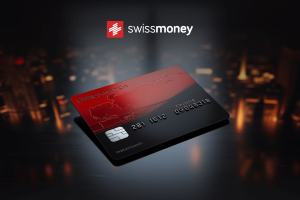Have you ever wondered how to get money off your current virtual card? If you’re looking for ways to withdraw money from a virtual card to a bank account or simply seeking more efficient ways to manage your digital finances, you’ve come to the right place.
In this article, we’ll guide you through the steps and methods to help you get your money off a virtual card. Whether you’re new to virtual cards or looking for tips and tricks, we’ve got the answers you need.
What is a virtual credit card?
Virtual credit cards (VCC) and virtual debit cards are digital alternatives to physical cards issued by banks, virtual Visa providers, or MasterCard providers.
Virtual cards are prepaid cards that you load with a specific amount of funds and can use to pay online for various purchases or bills.
However, not all virtual cards provide cardless credit or debit options, so it’s essential to verify their availability with your credit card provider.
Virtual Visa card
A virtual Visa card is a digital card issued to consumers by financial service providers (often FinTech or EMI). However, a virtual Visa card lives mostly in the confines of a smartphone app and electronic wallet.
Withdrawal rates for a virtual Visa card
On average, getting money off a virtual card balance costs 1% to 3% of the transferred amount.
However, money transfer rates for virtual Visa cards can also vary based on the issuing bank, financial institution, etc. Therefore, here are some key points to consider:
- Domestic transfers: When you use a virtual Visa card for domestic money transfers, there may be minimal to no fees. It mainly depends on the issuing bank’s policies.
- International transfers: When talking about international money transfers using a virtual Visa card you may face currency conversion charges and transaction fees. However, they can vary significantly among different banks and virtual card providers.
- Third-party services: If you are using a third-party service or platform to make money transfers with your virtual Visa card, such as PayPal or a digital wallet, be aware that these services may have their additional fee structures.
- Exchange rates: Keep in mind that exchange rates can also impact the overall cost of international money transfers. Banks and financial institutions may offer different exchange rates, which can affect the amount you receive after the conversion.
How does a virtual card work?
Virtual cards, like Visa Virtual Credit Cards (VCCs), offer a convenient way to make transactions with ease, anytime and anywhere, requiring just a few clicks.
Unlike traditional credit cards, VCCs are not tied to your bank account and are non-reloadable, with the initial amount chosen by you upon acquisition.
These virtual cards can also be seamlessly integrated into digital payment apps, enabling money transactions, recharges, and withdrawals.
One of the notable features of VCCs is their unique 16-digit card number, which is linked to your original credit card. This setup enhances security and provides greater control when using a virtual card than a physical one.
Some virtual cards are affiliated with prominent platforms like Amazon, Apple Pay, and Google Pay, enhancing the purchasing experience.
Furthermore, a virtual card is versatile, serving as a cardless credit or debit card, enabling cardless ATM access, and facilitating digital wallet access.
These payment cards revolutionize the payment process, safeguard your data, and offer greater control, making them a valuable asset for businesses that want independence from traditional banks for their purchases and transactions.
Virtual card – is it worth it?
Virtual Visa cards are becoming quite popular around the world.
According to the study, the worldwide number of virtual card transactions via mobile payment methods will increase from 5 to 53 billion by 2027 as the usage of virtual cards in contactless payments increases.
However, as with everything, a virtual card has both: pros and cons.
Benefits of using virtual card
The perspective technology that the virtual cards are has many valuable features, which makes it a favorable choice.
High security: Virtual cards offer superior privacy protection, keeping sensitive data like your full name, billing address, and bank account number safe, even if card numbers and CVV codes are compromised.
Moreover, virtual cards reduce the risk of theft and misuse, and some issuers offer enhanced security features, such as temporary card issuance, within 24 to 48 hours.
Convenient online and contactless payments: You can make online payments, subscribe to streaming services, and settle other subscriptions using your Visa virtual account balance. Simply add your Visa card to Apple Pay or GooglePay for seamless contactless payments and online shopping.
Easy money withdrawal: Virtual Visa cards allow easy cashing out of personal funds. However, you can’t use Visa gift cards for personal remittances or cash access at bank branches or ATMs.
Budget analysis: Virtual cards offer cardless ATM withdrawals and link to budget analysis tools. It makes tracking and analyzing your spending easier while promptly reporting suspicious activity. However, your virtual card needs to be linked to the physical.
Low cost: Virtual cards are typically affordable for most users, and some issuers even offer them at no charge. They function similarly to physical cards and can be used for online transactions.
Drawbacks of virtual card
While virtual cards have many advantageous qualities, they also have some shortcomings.
Slow adaptation: The use of VCC technology is not new. Unfortunately, not all companies have embraced modern technology. Many hesitate to do so because they lack the necessary tools or don’t have much experience with technology and find the VCC too complicated to use.
Problematic refunds: Usually, if a product you purchased online is not up to par, you may send it back, and the seller will provide a refund. However, since a VCC may disappear after making a transaction. Therefore, getting a refund can be difficult.
Withdrawing money off a virtual card
As it is clear what virtual cards are and what makes them so special, it’s time to uncover the ways you can get money off a virtual card you have.
Transferring money from a virtual card to a bank account
Here are some universal steps on how you can withdraw money off a virtual card straight to your bank account:
- Open your virtual card account on its app or website.
- Look for a Transfer money or Send money option on the dashboard and tap it.
- Select one of the bank accounts you want to withdraw money to or enter the bank account number and other required details manually.
- Choose the amount you want to withdraw and click Next or OK.
- Complete two-factor authentication and confirm the transaction to complete it.

Money withdrawal from a virtual card to PayPal
An alternative way to bank transfers is sending money to a PayPal account. You will need to follow a few steps to do so:
- Sign in to your virtual card account on its associated app or website.
- Click on the Transfer button. You should look for the PayPal option there.
- Enter the number of a PayPal account you want to withdraw money to.
- Determine the amount and click Next or OK.
- Confirm the transaction with a two-factor authentication method and then finalize it.
Sending money from a virtual card to a virtual gift card
You can always get your money off a virtual card to a virtual gift card. If you are considering it as an option, these are the steps for it:
- Navigate to the app or website of your virtual card provider.
- Look for the Transfer option.
- Choose a virtual gift card at the retailer’s shop and scan it or enter the card number manually.
- Choose the amount of money you want to transfer and click Next or OK.
- Confirm the transaction using a two-factor authentication method.
FAQ
Can I transfer money off a virtual card at an ATM?
Unfortunately, if you don’t have a physical card, you cannot get money off a virtual card through an ATM.
However, you can link a virtual card to your physical credit or debit card or mobile wallet. This action makes it possible to withdraw cash at ATMs.
Are virtual visa cards free?
Typically, Visa Virtual Cards are not free. While some financial institutions or companies may offer virtual Visa cards as part of promotions or special offers without an initial issuance fee, there are often associated fees that users should be aware of.
Can you exchange a Visa gift card for cash?
Fortunately, you can get your money off a Visa gift card. The easiest way to turn a Visa gift card into cash is through an ATM. Visit an accredited ATM and insert your card into the machine to withdraw money.
What is the difference between a virtual debit card and a virtual credit card?
A virtual debit card uses your funds from a linked bank account, while a virtual credit card provides a line of credit from the issuer. Virtual credit card allows you to borrow money and repay it later with interest.
Can you move virtual card funds to a physical card?
Generally, you cannot get your money off a virtual card directly to a physical one because they are separate entities with different funding mechanisms.
However, if you still want to move funds to a physical card, transfer money to your bank account and then use it.
Read More:


